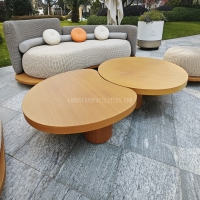Welcome to the website for landscape facilities products and knowledge.
How does wrought iron resist abrasion in landscape sculpture?
Wrought iron has long been prized for its exceptional durability in landscape sculptures, particularly its ability to withstand abrasion over time. This resilience stems from its unique material composition and manufacturing process.
The fibrous nature of wrought iron, created through traditional forging techniques, gives it a distinctive grain structure that naturally resists wear. Unlike cast iron, which is brittle, wrought iron's malleability allows it to absorb impacts without cracking or excessive surface damage.
Several factors contribute to its abrasion resistance:
1. High carbon content (0.02-0.08%) creates a tough surface layer
2. Slag inclusions act as natural reinforcement fibers
3. Work-hardening during forging increases surface hardness
4. Proper finishing techniques (like powder coating) add protective layers
Modern treatments enhance this natural durability. Hot-dip galvanizing and specialized patinas not only protect against corrosion but also create surfaces that resist mechanical wear from environmental factors like wind-blown debris or accidental contact.
The metal's longevity makes it ideal for high-traffic public art installations where both beauty and durability are essential. Proper maintenance, including occasional waxing or oiling, can further extend its abrasion resistance for decades of outdoor display.
Artists and landscape architects value wrought iron precisely because it maintains its artistic integrity while withstanding the rigors of outdoor exposure - a rare combination in sculptural materials.
Related search:

Recommendation
Elliptical metal outdoor table with nested design, resembling wood grain, round table